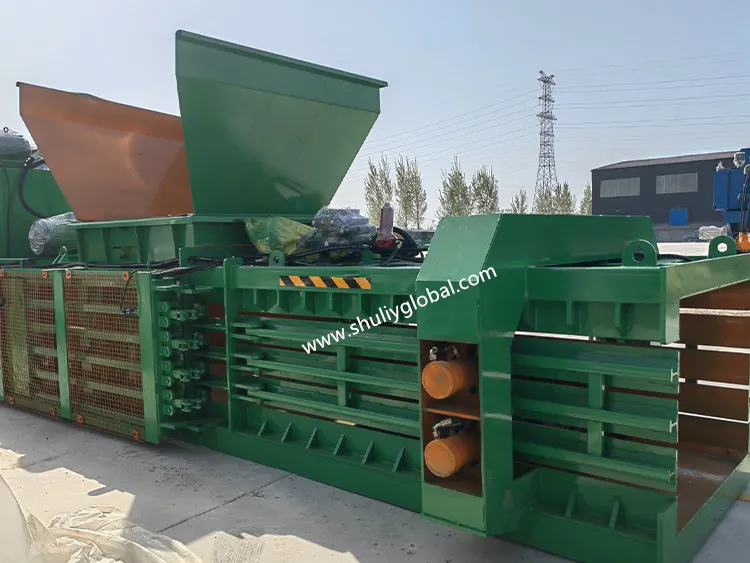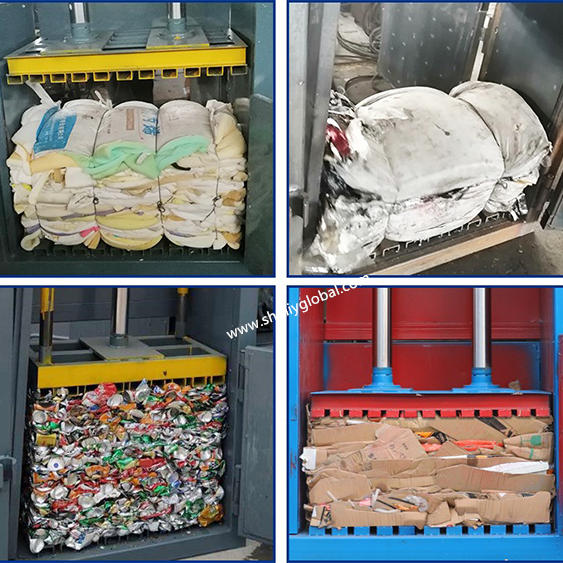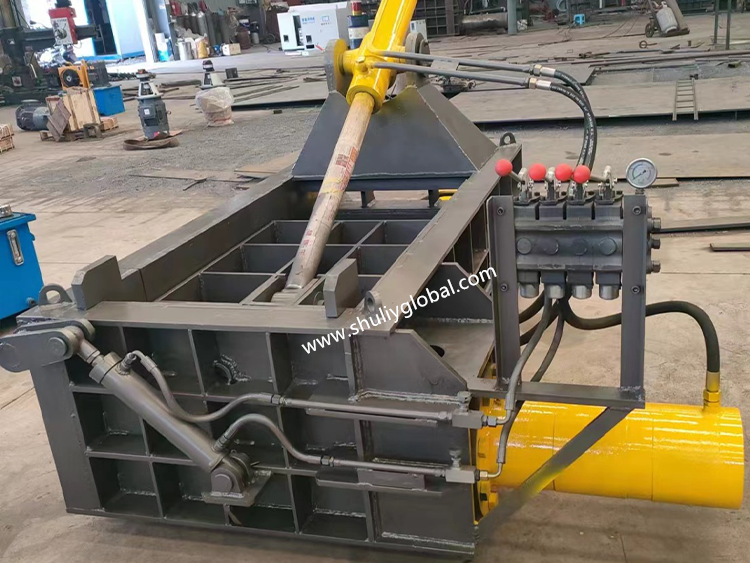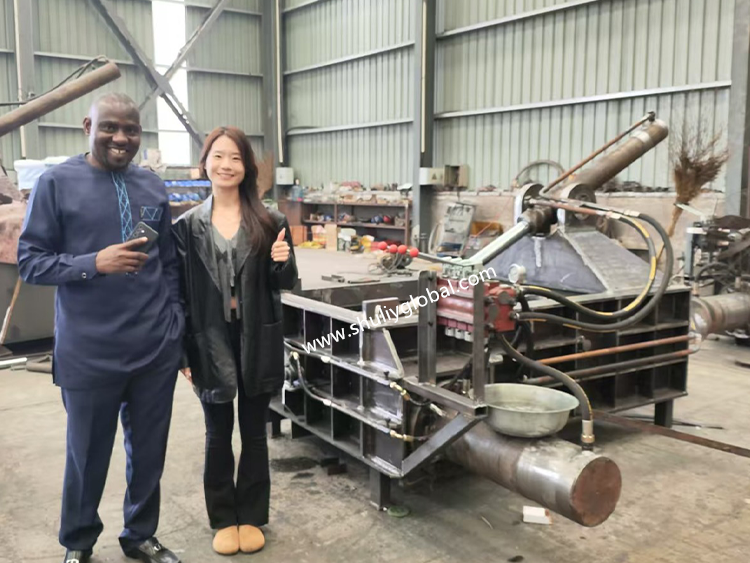Les balers métalliques sont des équipements mécaniques indispensables dans l'industrie moderne. Ils compriment divers morceaux métalliques en blocs réguliers par une forte pression, apportant des changements révolutionnaires à l'industrie du recyclage des métaux. Cet équipement améliore non seulement l'efficacité du recyclage des métaux, mais fournit également un fort soutien au recyclage des ressources.
Principe de travail des balers métalliques.
Les balers métalliques sont principalement composés de quatre parties: système hydraulique, chambre de compression, système de contrôle et dispositif de décharge. Le système hydraulique fournit une forte puissance de compression, la chambre de compression est l'espace pour la formation de restes de métal, le système de contrôle est responsable du fonctionnement automatique de l'ensemble du processus d'emballage et le dispositif de décharge envoie les blocs métalliques emballés.
Lorsque l'équipement fonctionne, l'opérateur met les restes de métal dans la chambre de compression. Après avoir commencé l'équipement, le système hydraulique entraîne la tête de pression pour comprimer le métal. Après plusieurs compressions, les restes métalliques sont pressés dans des blocs à haute densité, et enfin les produits finis sont envoyés par le dispositif de décharge. L'ensemble du processus réalise le fonctionnement automatisé, qui améliore considérablement l'efficacité du travail.
Avantages techniques des balers métalliques.
Les balers métalliques modernes utilisent généralement une technologie hydraulique avancée, avec une pression de centaines de tonnes, ce qui peut facilement gérer divers types de restes métalliques. L'équipement est équipé d'un système de contrôle intelligent, qui peut réaliser le processus complet de l'alimentation automatique, de la compression, du regroupement et de la décharge.
En termes de performances de sécurité, la balle métallique est équipée de plusieurs dispositifs de protection de sécurité, tels que la protection contre les surcharges, l'arrêt d'urgence, la verrouillage de la porte de sécurité, etc., pour assurer la sécurité de l'opérateur. Dans le même temps, l'équipement adopte une conception modulaire, qui est facile à entretenir et à réduire le coût d'utilisation.
Quels métaux de ferraille conviennent aux balers métalliques?
1. Métaux ferreux
Acier: y compris la ferraille en acier, les plaques en acier, les barres en acier, les tuyaux en acier, les fils en acier, etc.
Fonte: comme les pièces en fonte des déchets, les déchets de machines-outils, etc.
2. Métaux non ferreux
Aluminium: comme les canettes en aluminium, les profils en aluminium, les fils en aluminium, les plaques en aluminium, etc.
Cuivre: y compris les fils de cuivre, les tuyaux en cuivre, les plaques de cuivre, les restes de cuivre, etc.
Zinc: comme les alliages de zinc, les plaques de zinc, etc.
Plomb: y compris les batteries au plomb, les tuyaux de plomb, etc.
Acier inoxydable: comme la ferraille en acier inoxydable, la plaque en acier inoxydable, etc.
3. Scrap en métal mélangé
Sccasse automobile: comme les parties métalliques des voitures abandonnées (corps, moteur, boîte de vitesses, etc.).
Scrap de l'appareil domestique: tels que les parties métalliques d'anciens réfrigérateurs, les machines à laver, les climatiseurs et autres appareils électroménagers.
Déchets industriels: tels que des restes de métal et des restes produits par le traitement mécanique.
4. Autres matériaux métalliques
Matériaux en alliage: comme les alliages de titane, les alliages de nickel, etc.
Emballage métallique: comme les barils métalliques, les canettes métalliques, etc.
Quelles sont les caractéristiques communes des matériaux adaptés aux mèches métalliques?
Compressibilité: les balers métalliques conviennent au traitement des matériaux métalliques avec une ductilité et une compressibilité.
Valeur de recyclage élevée: ces matériaux ont généralement une valeur de recyclage élevée et sont faciles à transporter et à réutiliser après avoir été emballés par des balers métalliques.
Diverses formes: Qu'il s'agisse de bloc, de bande, de feuille ou de déchets lâches, les balers métalliques peuvent le gérer efficacement.
Précautions pour l'utilisation des balers métalliques
Déchets dangereux: les déchets métalliques contenant des produits chimiques ou des matières radioactives doivent être spécialement traités avant la mise en balle.
Déchets surdimensionnés: pour les déchets métalliques trop grands, il peut devoir être coupé ou écrasé en premier.
En bref, les balers métalliques conviennent au traitement des déchets métalliques les plus courants, ce qui peut améliorer considérablement l'efficacité du recyclage et réduire les coûts de transport et de stockage. Ils sont un outil important dans l'industrie du recyclage des métaux.




